History of clothing and textiles
The
study of the history of clothing and textiles that are explored the
development, use, and availability of clothing and textiles compared to human
history. Clothing and textiles reflect the elements and technologies available in different civilizations at different times. The variety and distribution of
clothing and apparel within a society reflect social customs and culture.
Wearing
clothing is a human trait and a feature of most human society. Men and women
started wearing clothes after the last snow. Anthropologists believe that
animal skins and plants were transformed into coverings to protect them from
the cold, heat, and rain, especially as humans moved to new climates.
Textiles
can be felt or fibers made from the yarn can be cut and then woven to make nets,
loops, knits, or fabrics that appeared in the Middle East towards the end of the
Stone Age. From ancient times to the present day, the method of textile
production has constantly evolved and the preferences of the available textiles
have influenced how people carried their possessions, dressed, and decorated them.
Early clothing condition
Genetic analysis shows that the human body, which is in clothing, moved away from the
head gourd only about 170,000 years ago, proving that humans began to wear
clothing at this time. These speculations predict the first known human
migration from Africa, although other hominid species that clothed and shared
these louse infections appear to have already migrated.
Sewing
needles are dated at least 50,000 years ago and are uniquely associated with
any human species other than modern humans, i.e. Denisova / H. Altai. The
earliest possible example is a Swedish point found in the Sibudu Cave in South
Africa, some 60,000 years ago. Other early examples of needles dating from
41,000 to 15,000 years ago are found in multiple places, e.g. Slovenia, Russia,
China, Spain, and France.
Ancient East clothing and textiles
In Mesopotamia, the regular Sumerian dress was very simple, especially in summer
and winter. Even wealthy men were depicted with naked torsos, wearing only a
kind of short skirt called kaunakes and women wore long dresses up to their
ankles. The king was wearing a tunic, a coat that reached to his knees, a belt
in the middle. Over time, the development of wool weaving has resulted in a
great variety of garments. Thus, towards the end of the third millennium BC and
later men wore short sleeves with a belt and even a tunic above the knee.
Women’s clothing features more varied designs: without sleeves or narrow or
wide, usually long and without highlighting the body.
Ancient Indian clothing and textiles
To
this day a few threads of cotton, involved in the excavations of the Indus
Valley Civilization, have been found in the context of a connecting cord, for
the neck of the Putir necklace. However, a male figure is seen in the exposed
terracotta statue of Mehergarh which is commonly interpreted as a turban.
Statues labeled "Priest-King" from the Mohenjo-Daro site are depicted
wearing shawls with floral patterns. So far, the only sculpture in the Indus
Valley looks as clearly clothed. Other sculptures of dancing girls excavated
from Mohenjo-Daro include only bangles and other jewelry. However, it does not
provide any concrete evidence to validate the history of clothing during the
Harappan period. Harappans have even used natural dyes to dye their fabric. Research
shows that the cultivation of indigo was common.
Ancient Egypt clothing and textiles
There
is evidence in favor of the production of linen cloth in ancient Egypt in the
Neolithic era, c. 5500 BC. Cultivation of domestic wild flax, probably imported
from the Levant, was recorded early in the c. 6000 BC. Other bust fibers,
including rash, wood, dates, and papyrus, were used alone or with linen to make
ropes and other textiles. Evidence for fur production in Egypt is very low
during this period. Spinning techniques included drop spindle, hand-to-hand
spinning, and thigh rolling; the yarn was also cut. Before the New Kingdom, a
horizontal ground loom was used when a vertical two-beam loom was probably
introduced from Asia. Linen bandages were used in mummification funeral rites,
and in art Egyptian men were shown wearing linen kilts and women in a variety
of shirts and jackets in narrow dresses, often the perfect pleasing fabric.
Ancient China clothing and textiles
The earliest evidence of silk production in China has been found in the Yangshao
culture sites in Xia, Shanxi, where a cocoon of Bombyx Mori, cut in half with a
sharp knife, dates from 5000 to 3000 BC. Primitive weaving pieces can also be
seen in the Hemudu culture sites in Yuyao, Zhejiang, around 4,000 BC. Silk
scraps were found in a Liangzhou culture site in Qianshanyanyang, Huzhou,
Zhejiang, in 2700 BC. Other fragments have been recovered from the tombs of the
Shang dynasty. Under the Shang dynasty, Han wore Chinese clothing or Hanfu
consisting of a Yi, a slender-cuffed, knee-length tunic tied with a cut rope,
and a narrow, ankle-length skirt, known as Shang, dressed with bixi, a length
of fabric that reaches the knee. The clothing of the aristocracy was made of
silk with distinctive primary colors.
Ancient Japanese clothing and textiles
The earliest evidence of weaving in Japan relates to the time of Jomon. This
culture is defined by pottery decorated with cord patterns. In a shell in
Miyagi Prefecture, about five and a half thousand years ago, some pieces of
cloth made of bark fiber were scattered. Hem fiber was also discovered in
Toriyama Shell Tila, Fukui Prefecture, it is seen that these trees could also
be used for clothing during the Jomon period. Some pottery pattern impressions
prove their weaving technique but also depict delicate mat designs. Patterns of
Jomon pottery show people wearing short-top dresses, close-fitting trousers, funnel sleeves, and rope-like belts. The images also show garments with
patterns with painted or painted arch designs, although it is not clear whether
this indicates what the fabric looks like or whether it simply happened as a
style of presentation used. Pottery also shows no difference between men's and
women's clothing. This may be true because the costumes at that time were more
for decoration than social differences, but it may be due to the presentation
of pottery rather than how people wore clothes at that time. Since bone needles
were also found, it is thought that they wore clothing that was sewn together.
Medieval Clothing and textiles
European
dress gradually changed from 400 to 1100. People in many countries wear
different clothing depending on whether they are identified with the old
Romanized peoples, or new invading peoples like the Franks, Anglo-Saxons, and
Visigoths. Men of the invading population usually wore short tunics with belts
and visible trousers, hoses, or leggings. The Romanized people and the Church
were faithful to the long melody of Roman formal dress.
The
aristocracy imported silk fabrics from Byzantine and later Muslim,
cosmopolitan, and possibly cotton. They can also carry their own woven bleached
linen and colored and simply patterned wool in Europe. Embroidery
ornamentation, however, was probably very extensive, though not generally
identifiable in art. The lower class had local or homespun wool, often undyed,
trimmed with decorative bands, various embroidery, tablet woven bands, or
colorful borders woven into the fabric on the weave.
Renaissance and early modern period clothing and textiles
Wool
is the most popular fabric for all classes, followed by hemp and linen. Wool
fabrics with velvet naps are found in a variety of qualities, from fairly
undyed fabrics to fine, dense broadcloths; High-value broadcloth was the
backbone of the English economy and was exported throughout Europe. Wool
fabrics were colored in rich colors, especially red, green, gold, and blue.
Silk-weaving
was well established around the Mediterranean in the early fifteenth century,
and often silk velvets with silver-gilt wefts were gradually seen in Italian
clothing and in the clothing of the wealthy throughout Europe. State floral
designs with pomegranate or artichoke patterns extended to Europe from China in
the previous century and Istanbul and Bursa became a powerful designs in the
Ottoman silk-producing cities and spread to silk weavers in Florence, Genoa,
Venice, and Valencia.
In the early 17th century, there was a significant difference between the
Protestant-favored fashions of England and the Netherlands, which still reflect
the heavy influence of Spanish influence and the light French and Italian court
fashion.
Modern period clothing and textiles
In the eighteenth century, a distinction was made between full dress worn in court
and informal ceremonies, and everyday wear. The full-dress follows the style of
the French court, where rich silk and elaborate embroidery reigned. Men tend to
wear coats, waistcoats, and breeches for both the whole outfit and the dress
code. These are now sometimes made with the same fabric and trim, indicating
the birth of the three-piece suit. For women's clothing, Indian cotton,
especially printed chintz, was imported in large quantities to Europe, and by
the end of the period, white muslin clothing was in fashion.
Sewing machines have extended in the 19th century with new applications for textiles,
and in the 20th-century inventions in synthetic fiber and computerized
production control systems. In the early twentieth century, workers in the
garment and textile industries were integrated into the United States. In the
twentieth century, the industry expanded to such an extent that educational
institutions such as UC Davis established a division between textiles and clothing.
Changing lifestyles, activities, and 20th-century clothing manufacturers can
achieve the desired characteristics such as optimal clothing, production,
durability, or durability that can make their products more effective.
In the 2010s, the global textile industry caught fire for unsustainable practices.
The textile industry is shown to have a 'negative environmental impact' at most
stages of the manufacturing industry. Advances in textile treatment, coatings,
and dyes have had a vague impact on human health, and textile contact
dermatitis is on the rise among textile workers and clothing consumers.
Scholars have pointed out that Western consumers are buying new clothes as well
as reducing the lifespan of clothes. Rapid fashion has been suggested to
contribute to the level of textile waste growth. According to the United
Nations Commodity Trade Statistics Database, the global market for textile and
garment exports in 2013 stood at $772 billion.

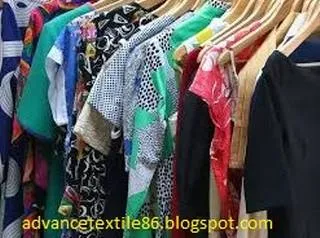
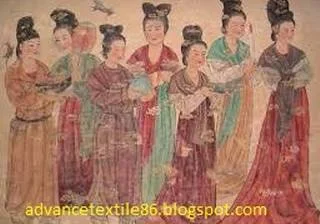
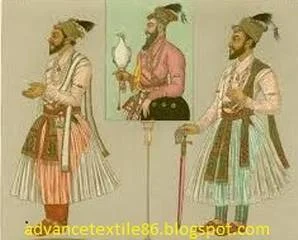
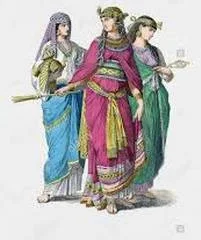
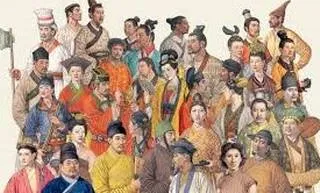
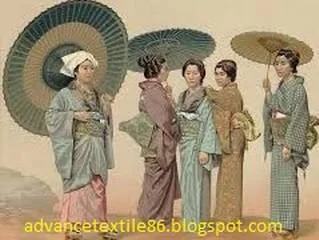
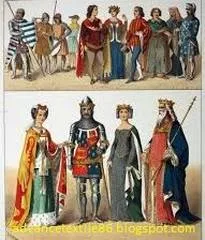
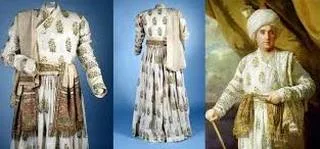
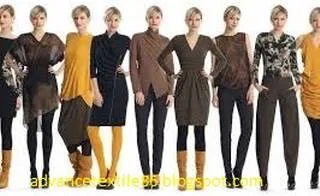








0 Comments